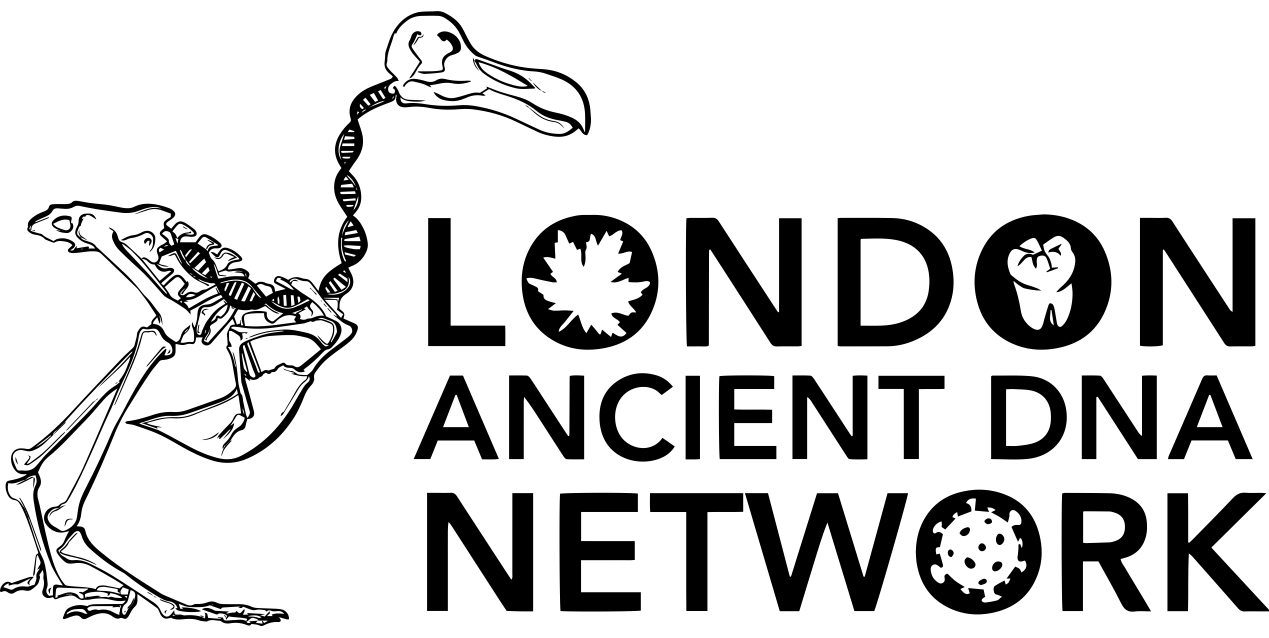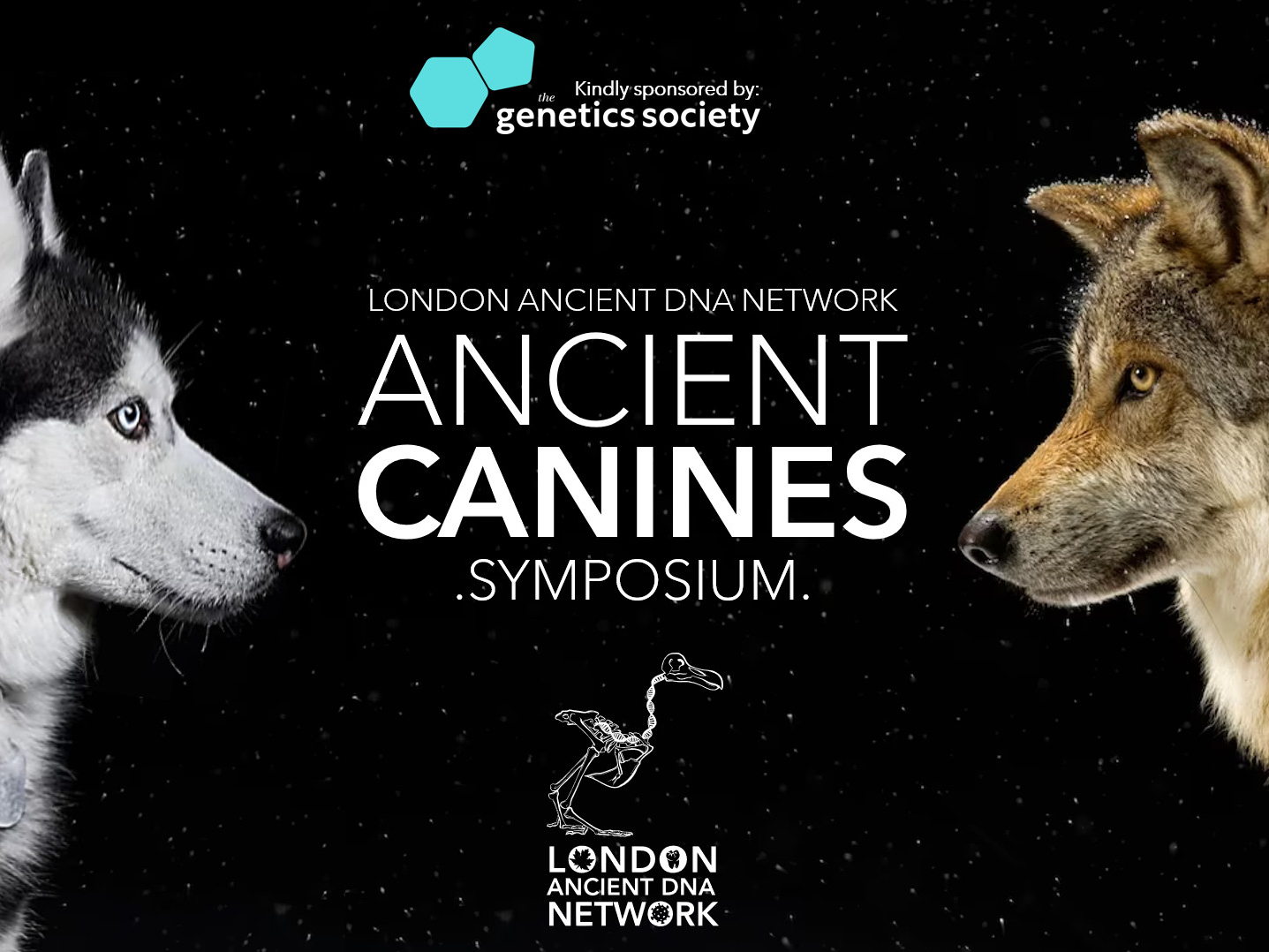
In January 2025, the London aDNA Network hosted our first symposium - 'Dog Day'
One of the goals of the Network when we re-started it a year ago was to hold an all-day symposium bringing together researchers from all career stages. We were looking a Christmassy theme, but unfortunately struggled to find many people working on ancient reindeer genetics. Thus, 'Dog Day' was born.
We were really lucky to secure funding from the Genetics Society to be able to run the event (and provide carers and travel grants where needed). Likewise, we were very grateful for the Natural History Museum for hosting us, meaning the attendees got the chance to have a look round the galleries during breaks in the day.
'Really great talks, all very interesting and pitched at a good level for maximum audience understanding (aka not too archaeology, not too genetics - it was a good happy medium)'
We were thrilled to welcome speakers covering canid aDNA from an evolutionary, conservation and archaeological perspective. These included researchers from as far away University of Adelaide, and ranging from Master's student to PI.
Anders Bergström - The search for dog origins
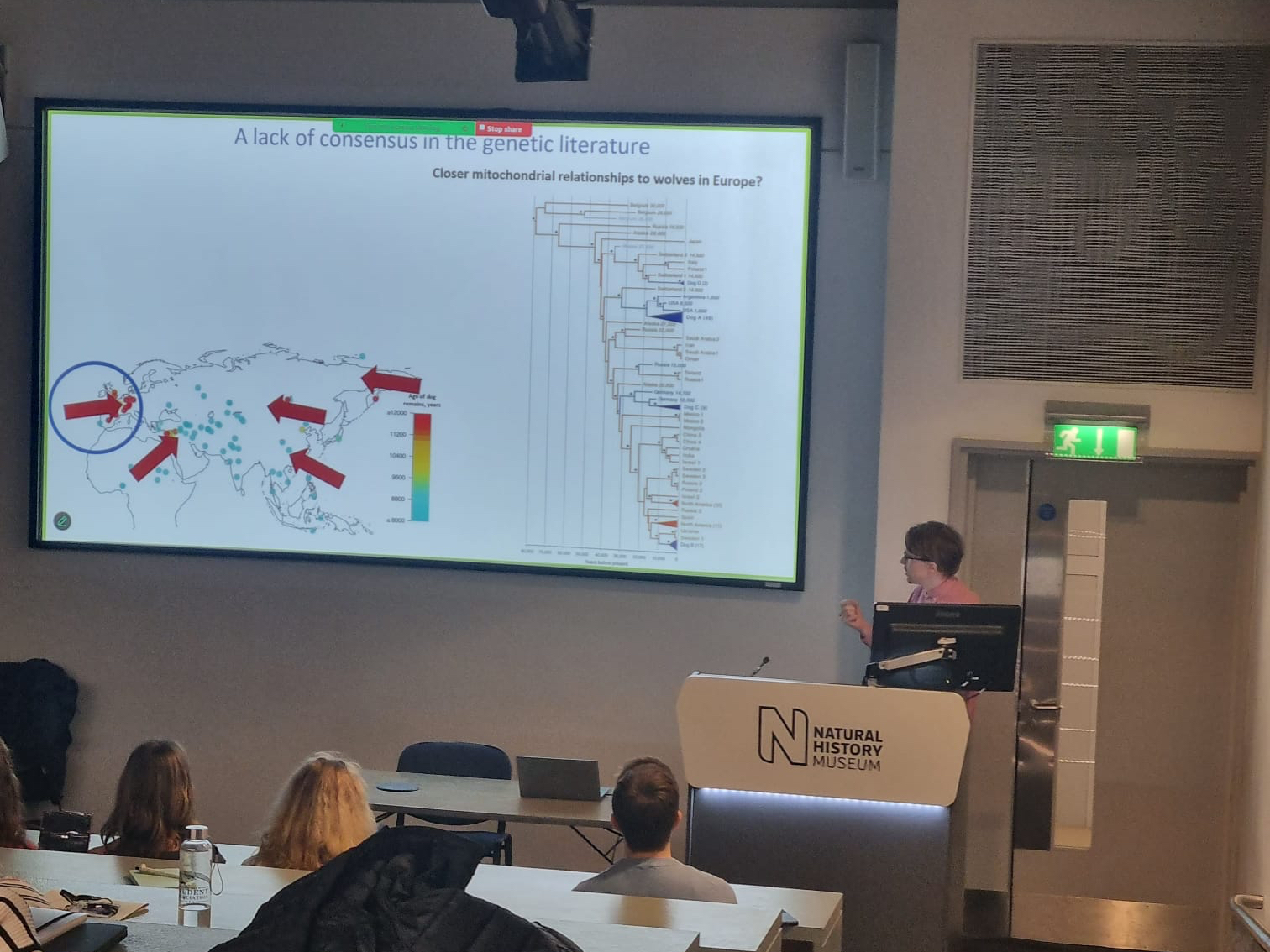
The origin of dogs is a long-standing scientific mystery – the questions of where, when, how, and by whom, remain largely unanswered. With a very sparse archaeological record from before 10,000 years ago, increasing attention has turned to DNA as a source of insight into dog origins. However, genetic studies have yet to converge on any kind of consensus. I will briefly review the past genetic literature on the dog origins question, and present our recent work in which we have managed to make some progress. I will argue that understanding the wild population history of wolves is crucial to providing the context in which the origins of dogs can be placed.
William Marsh - Life in the old dogs
Understanding dog domestication using ancient DNA data.
Jessica Peto - An Overview of the Zooarchaeological and Genetic History of Wolves in Britain since the Iron Age
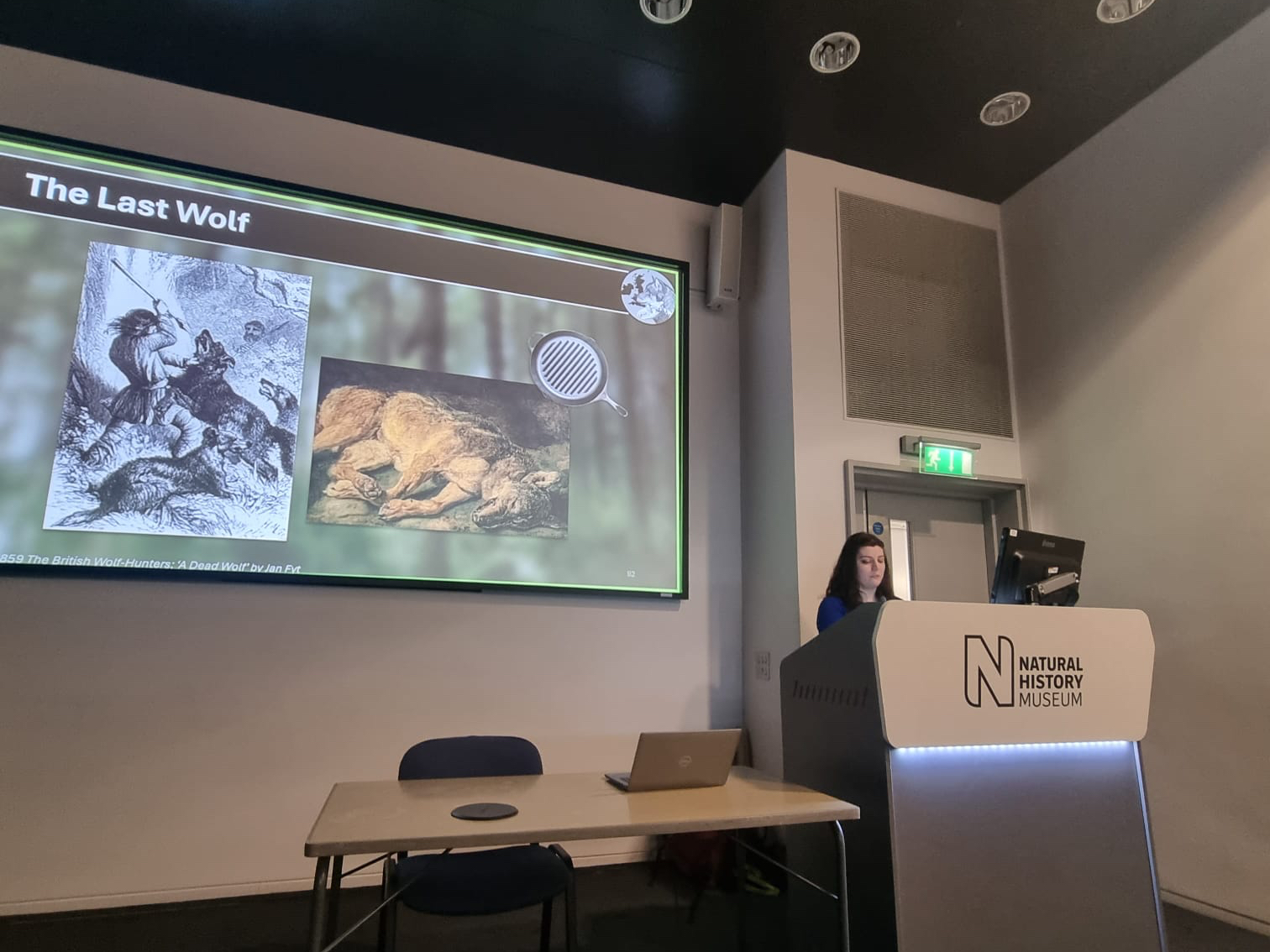
Synthesis works on the historical populations of wolves in Britain imply they survived into the 17th-18th century, with significant enough numbers to warrant systematic persecution in the early Medieval. However, the zooarchaeological record does not fully corroborate this, in which wolves are extremely rare, particularly in the historical period. One possibility for this rarity is the difficulty in distinguishing large dog and wolf remains with zooarchaeological methods alone. Through this project and using a multidisciplinary approach, we have identified and confirmed only one historical wolf element - a single mandible - radiocarbon dated to around 1750 CE.
Nathan Michielsen - Understanding the colonization and establishment of dingoes in Australia
Dingoes are Australia’s native canid and apex-predator and were likely introduced to the continent by seafaring humans sometime in the Late Holocene. Many aspects of their historical biogeography nonetheless remain obscure. How many founding events took place? How quickly did they establish themselves throughout the continent? And did humans facilitate their dispersal? I aim to tackle these questions and more in the first chapter of my PhD. In this talk, I will outline our approach to do so: producing spatially explicit population models using pattern-oriented modelling and information from the fossil record and modern and ancient DNA.
Shyamsundar Ravishankar - Ancient clues to answer modern questions about dingo population structure and admixture
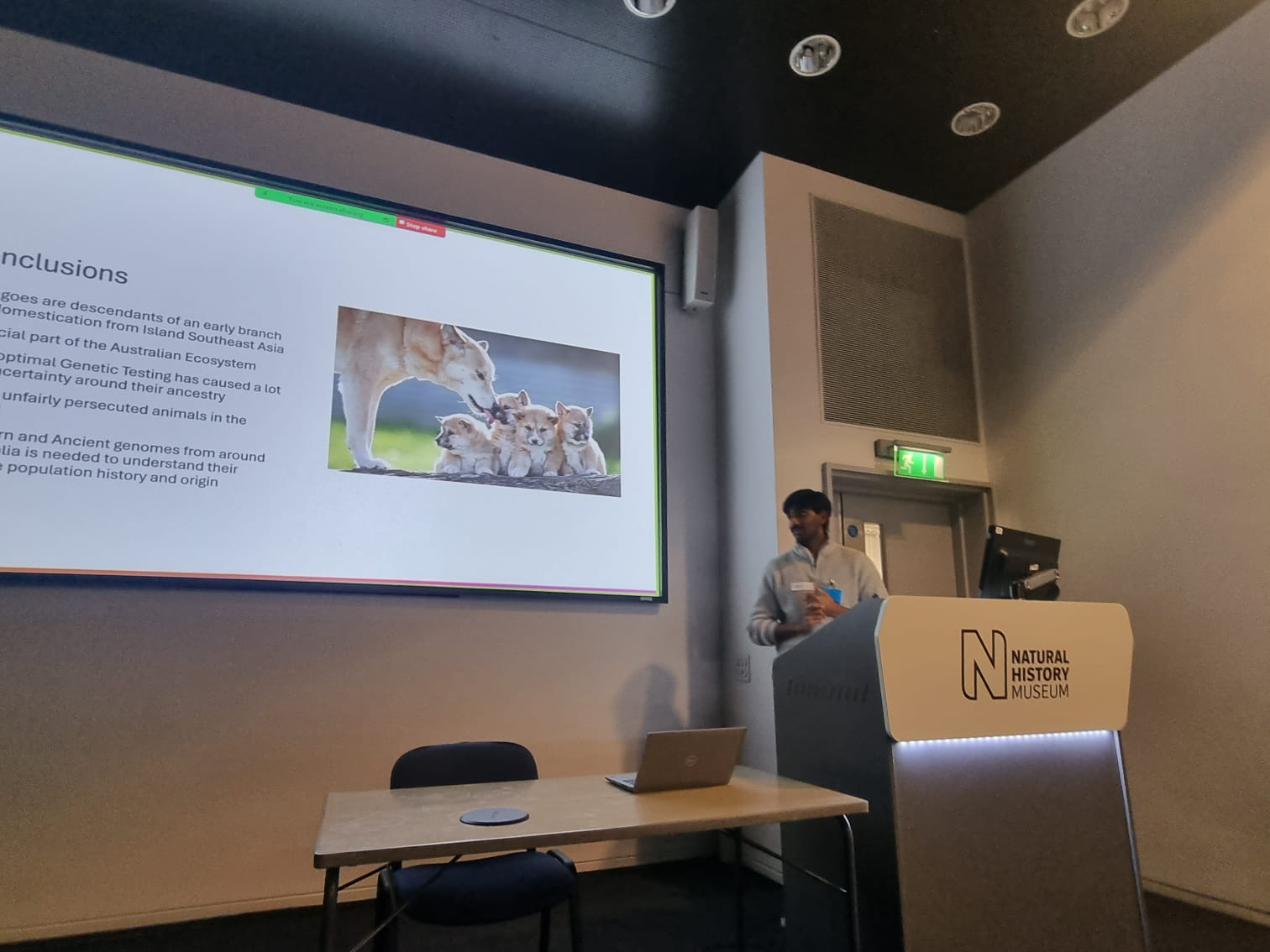
Ancient DNA, when combined with modern genetic data, can illuminate present-day population structures and histories. Here, we leverage recently published ancient dingo genomes to explore the genetic makeup and admixture of modern dingoes across Australia. We investigate the highly debated topic of dingo admixture proportions and demonstrate that ancient population structures have persisted in contemporary populations.
